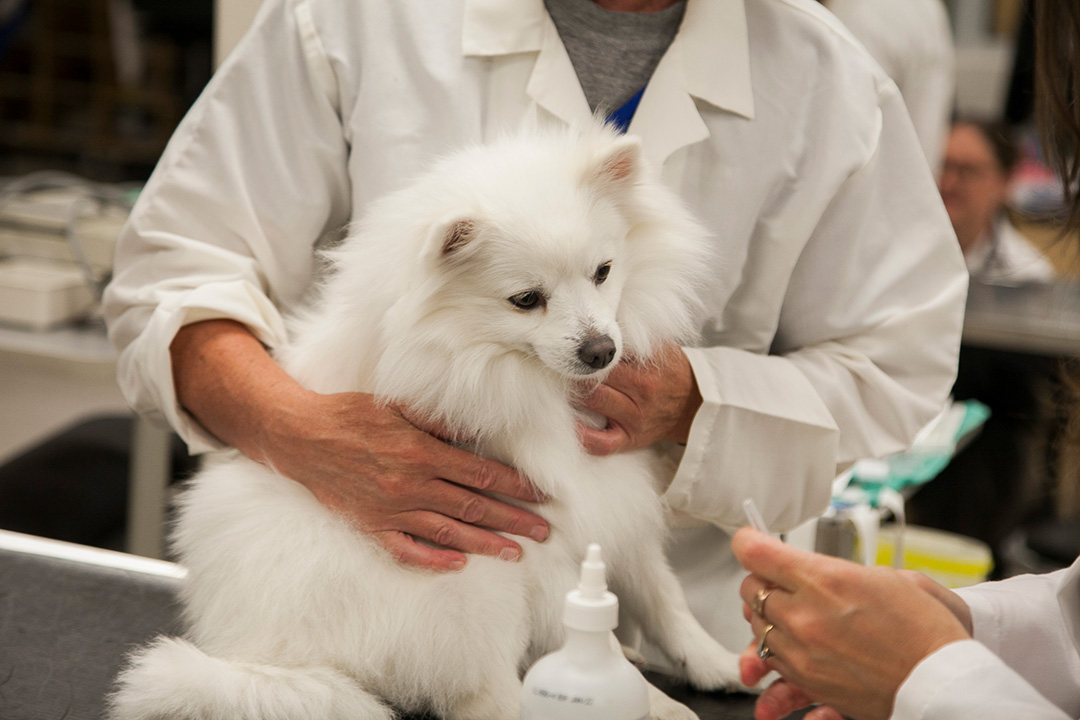
USask scientist looks at link between zoonotic diseases and imported dogs
A veterinary researcher at the University of Saskatchewan (USask) is hoping to connect with pet owners or canine rescue organizations that have recently imported dogs into Canada or plan to bring animals into the country.
By Jessica Colby“We’re asking that when the dog [comes] into Canada — if you know the date — contact us early so that we can arrange things,” says study lead Dr. Tasha Epp (DVM, PhD), a professor at the Western College of Veterinary Medicine (WCVM).
Her research focus is on zoonotic diseases that can be transmitted between animals and humans. Scientists estimate that 60 per cent of known infectious diseases and up to three-quarters of new or emerging infectious diseases are zoonotic in origin.
Dogs that have been recently imported into Canada and can be evaluated by a veterinarian within 30 days of entry are eligible to participate in the WCVM study that’s aimed at evaluating the potential animal health and public health risks linked to imported pets. Epp stresses that the study is voluntary and participation in the project doesn’t affect the entry status of any imported dogs.
“In the last five or six years, there’s been quite an interest from both the Public Health Agency and the Canadian Food Inspection Agency (CFIA) to look at the issue of importing dogs into Canada,” says Epp.
In September 2022, the CFIA implemented a new measure prohibiting the entry of commercial dogs from countries at high risk for rabies (a zoonotic disease) into Canada. The list includes selected countries in Africa, Asia, the Middle East, Eastern Europe, Central and South America and the Caribbean.
The federal agency made the decision after consulting with public health authorities and determining that the risk to human health was significant enough to warrant the ban. The United States implemented a similar measure in 2021.
Researchers recognize that imported dogs can bring disease into Canada, but the risks associated with these illnesses are still unknown, says Epp. As well, scientists are still learning what specific diseases can be carried by imported dogs into Canada.
“There are lots of countries around the world in which they have diseases that we don’t have in Canada in our dog population,” says Epp. She adds that other countries may also have different strains of existing diseases to which Canada’s dog population have never been exposed.
For example, Canadian veterinarians have seen cases of imported dogs spreading canine brucellosis — a contagious and zoonotic bacterial infection characterized by infertility and weight loss.
Leishmaniosis, an exotic disease caused by the zoonotic parasite Leishmania infantum, is another example of a serious illness that was recently brought to Canada through a dog imported from Morocco.
“We have a list of things that we’d like to test for,” says Epp.
The WCVM study is open to participants from Saskatchewan, Manitoba, Alberta and British Columbia who have had an imported dog arrive within the previous month. Eligible dogs can come from personal imports or rescue groups that are arranging dog imports.
The project covers all costs associated with disease testing (including blood and fecal samples). Plus, it provides up to $120 per pet toward a required health assessment that can be done by the owner’s regular veterinarian.
“[After getting] the [disease testing] results, we try to link back with the veterinarian so that if there is anything that needs attention, then the veterinarian and the owner can discuss that,” says Epp.
Completing the medical examination and collecting blood and fecal samples within the 30-day window after a dog’s entry to Canada is critical to the study's value, says Epp. If the evaluation isn’t done in this time frame, the researchers run the risk of not being able to associate test results with health issues derived from the animal’s country of origin.
“When we get the [test] results, we can link it back to them [the dogs] being imported and not what they’ve had while present here in Canada.”
In addition to the testing, Epp asks participants to complete a short, online questionnaire about their experience in importing dogs to Canada.
A similar study evaluated dogs that had been imported into Ontario, but this is the first surveillance study of its kind in Western Canada. Epp adds that owners in Eastern Canada seem to access dogs from certain countries while western Canadian owners and rescue groups source out dogs from a different set of countries.
Epp is hoping to include at least 120 dogs in the study to get a good sample size for review.
“[We’re] trying to get people aware of it so that we can just capture as many [dogs] as possible,” says Epp.
If you are interested in participating in this study, email compan.surv@usask.ca for more information.
